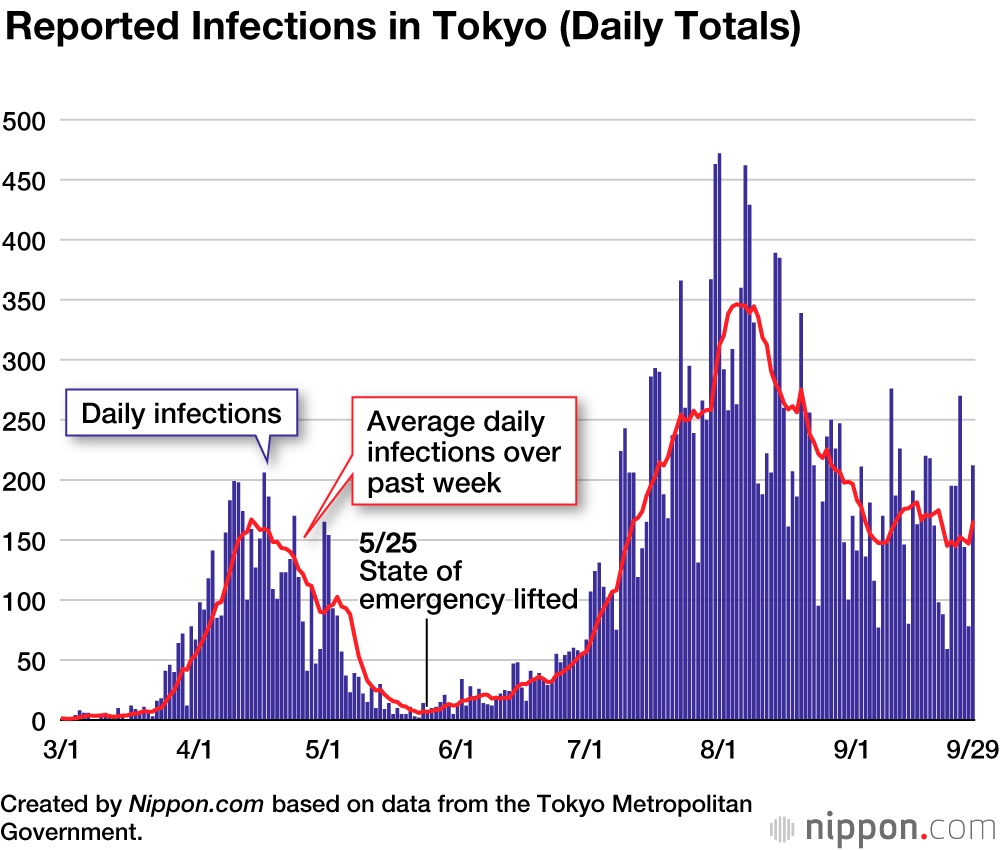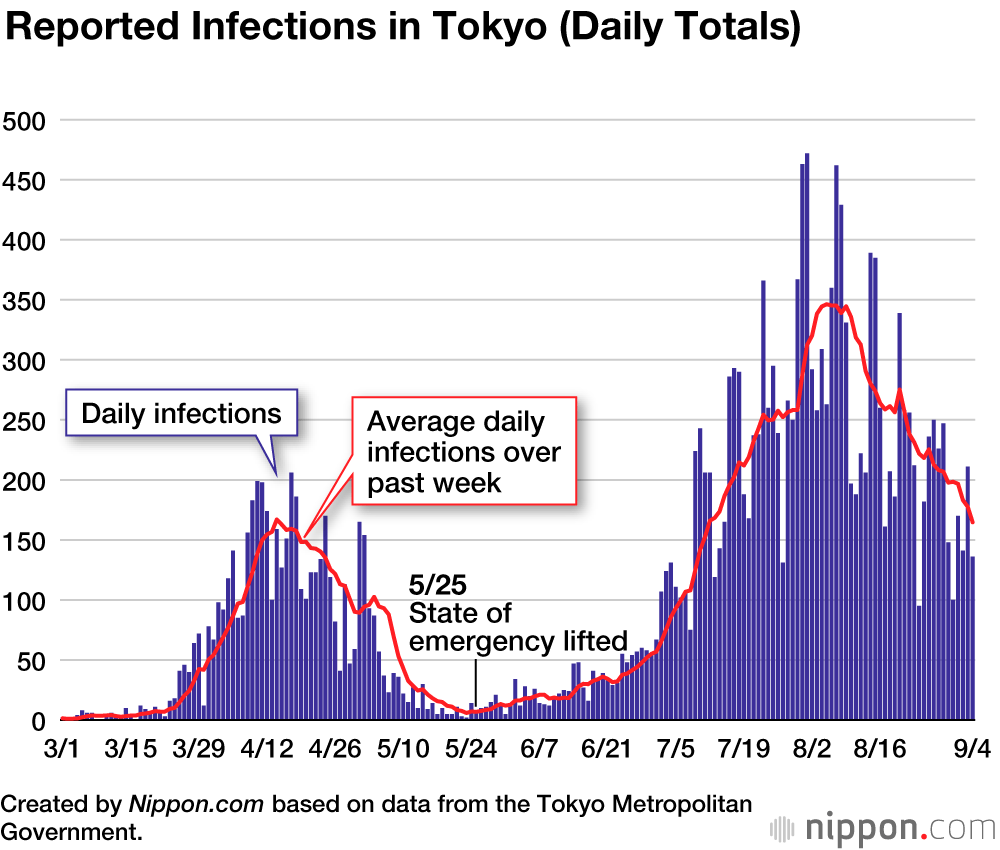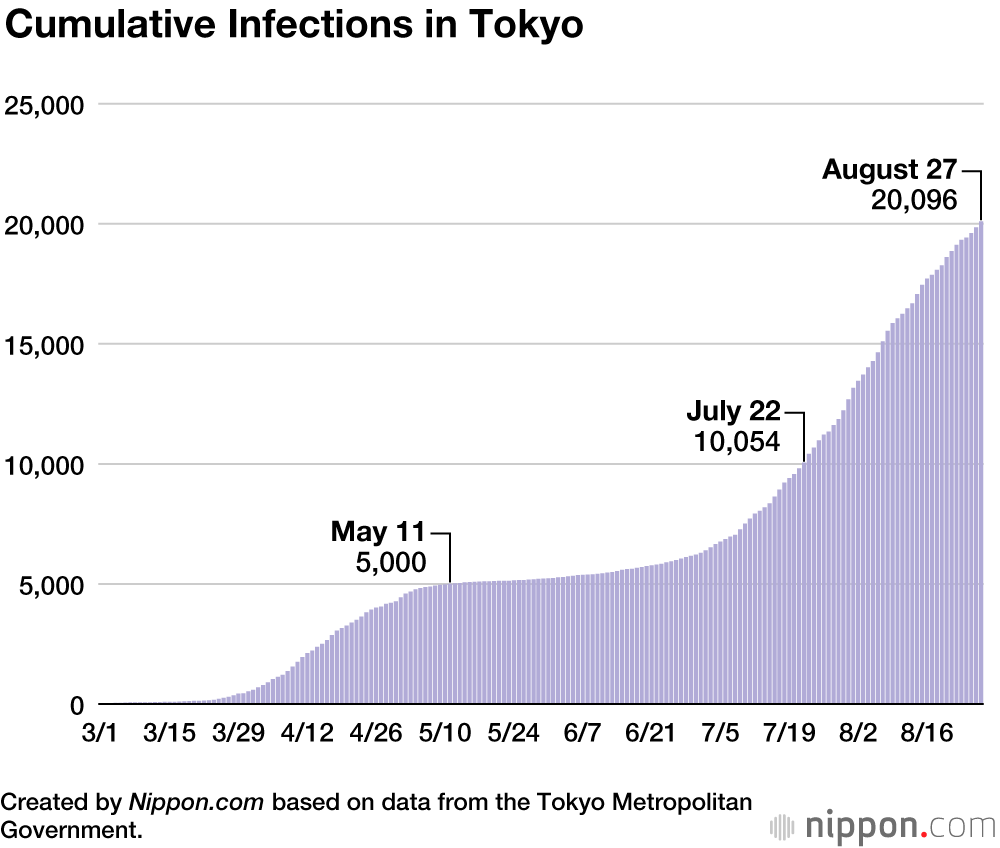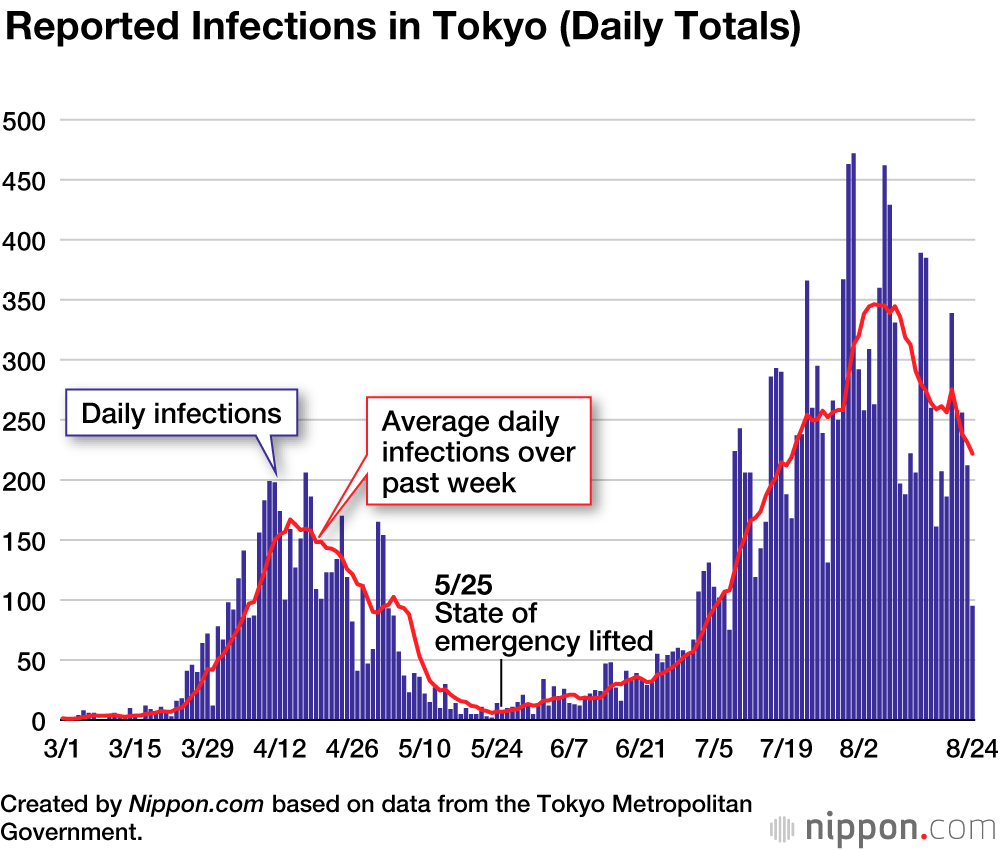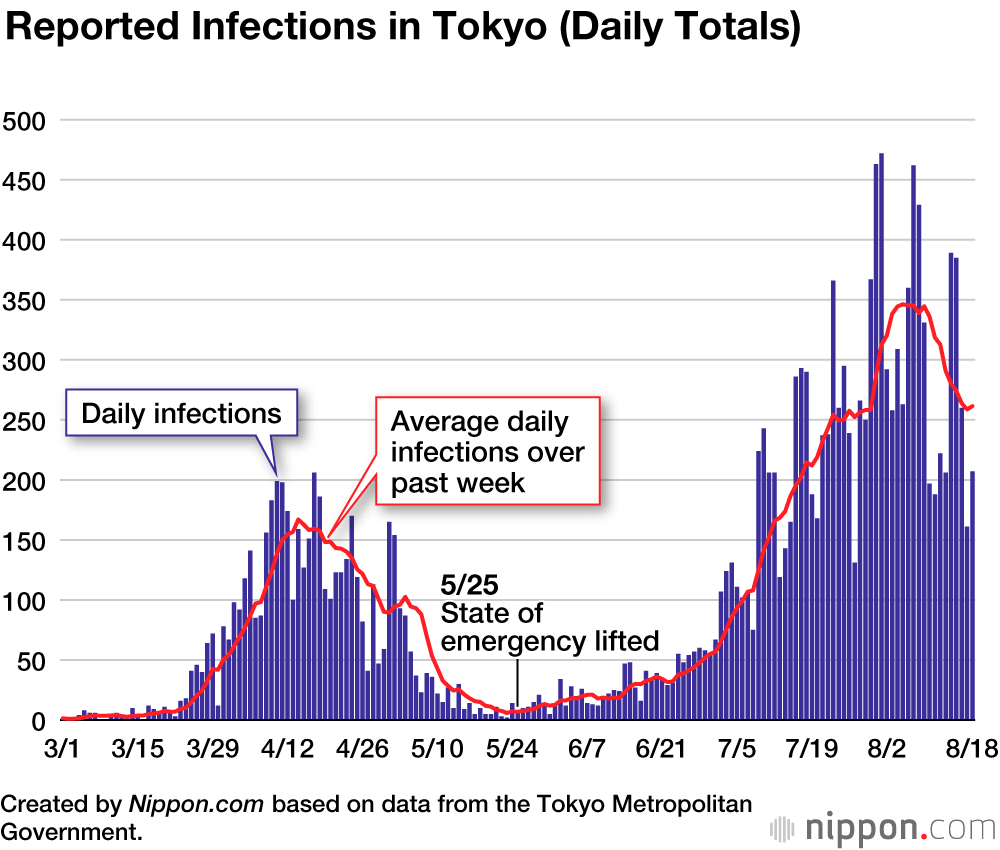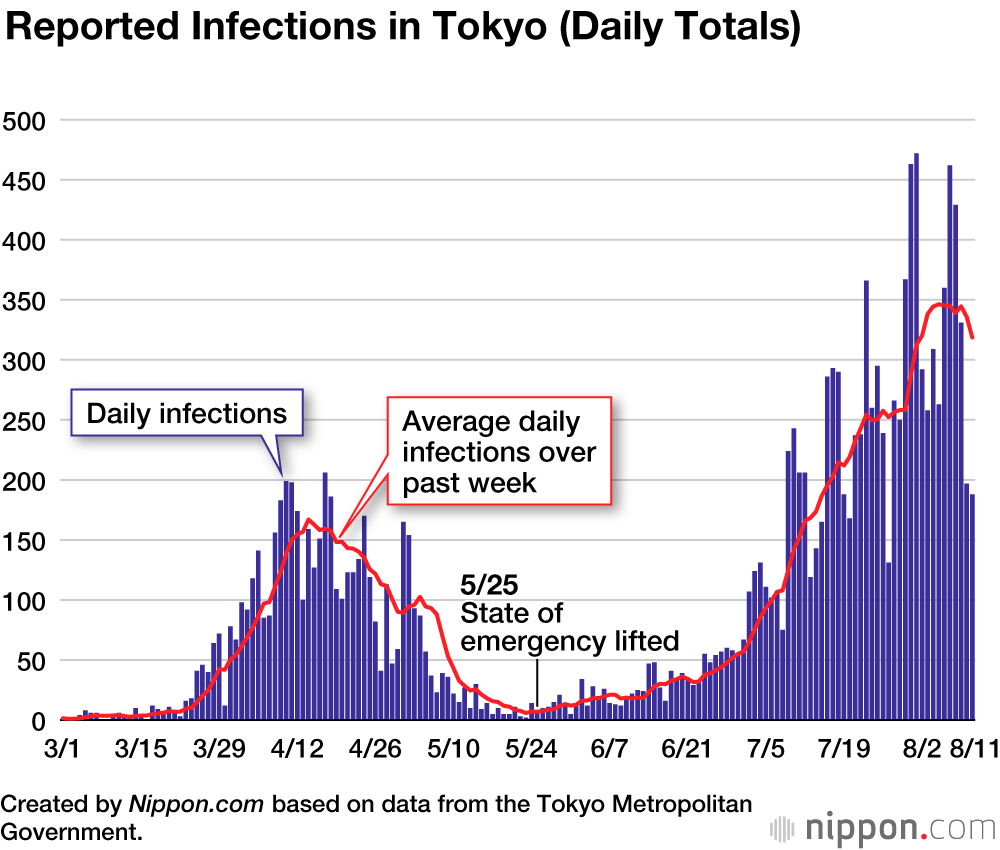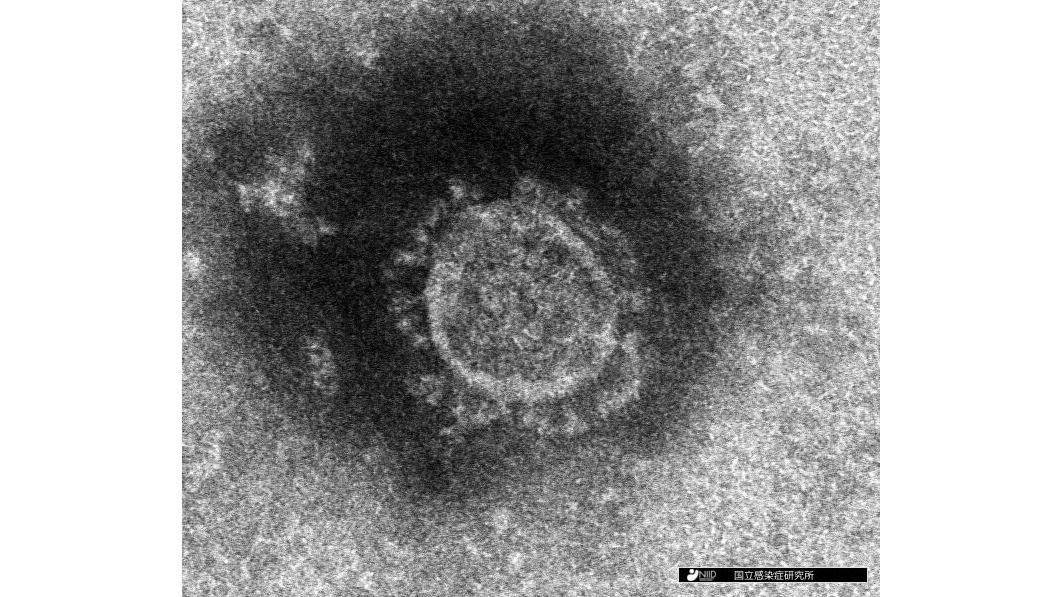
Coronavirus Cases in Japan by Prefecture (August and September 2020)
Society- English
- 日本語
- 简体字
- 繁體字
- Français
- Español
- العربية
- Русский
Click here for the latest updates.
Click here for updates from October and November.
September 30
Of the 574 new cases nationwide, 194 are in Tokyo. The country has now recorded fewer than 1,000 daily cases for 40 days. While this represents a drop from the peak in early to mid-August, there is no sign that the end of the health crisis is near, particularly in the capital.
September 29
The 532 new cases in Japan include 212 in Tokyo.
September 28
There are 301 new cases across the country, including 78 in Tokyo. Lower totals reflect reduced testing on weekends and holidays.
September 27
Of the 485 new cases nationwide, 144 are in Tokyo.
September 26
A total of 643 new cases are reported across the country, of which 270 are in Tokyo and 91 in Kanagawa.
September 25
Japan reports 576 new cases, including 195 for a second day in Tokyo, 79 in Kanagawa, and 62 in Osaka.
September 24
There are 483 new cases nationwide. With the end of the four-day weekend, the total increases along with the number of tests. Tokyo rises above 100 again, reporting 195 new cases.
September 23
Japan reports 219 new cases, including 59 in Tokyo. This is the first time for Tokyo to have fewer than 60 cases since June 30, although this is affected by reduced testing during the four-day weekend.
September 22
A total of 330 new cases are reported nationwide, with 88 in Tokyo. These low numbers are likely impacted by the testing having taken place during the preceding four-day weekend.
September 21
Japan reports 312 new cases, of which 98, or almost 30%, are in Tokyo. The daily nationwide total has now remained below 1,000 for one month.
September 20
There are 480 new cases in Japan, including 162 in Tokyo, 60 in Kanagawa, and 59 in Osaka.
September 19
Of the 601 new cases across the country, 218 are in Tokyo and 81 in Osaka.
September 18
There are 574 new cases nationwide, including 220 in Tokyo, 78 in Kanagawa, 40 in Chiba, and 24 in Saitama. While Tokyo has dropped from its August peak, there is no end in sight.
September 17
A total of 492 new cases are reported across the country. The daily total of 171 in Tokyo drops by more than 100 from the 276 cases reported on the previous Thursday, September 10.
September 16
Japan reports 548 new cases. Tokyo’s 163 cases bring its overall total to 23,437. Kanagawa has 101 new cases and Osaka 78.
September 15
There are 530 new cases across the country. Of these, 191 are in Tokyo, which enjoyed a sub-100 total the day before.
September 14
The nationwide daily total of 269 new cases includes 80 in Tokyo.
September 13
Of the 439 new cases reported across Japan, 146 are in Tokyo.
September 12
Japan reports 648 new cases, of which 226 are in Tokyo.
September 11
There are 644 new cases nationwide, including 187 in Tokyo, 120 in Osaka, and a record high for Miyagi of 15.
September 10
Japan reports 711 new cases, of which 276 are in Tokyo, 112 in Kanagawa, and 92 in Osaka. Due to the general downward trend in Tokyo, the metropolitan government plans to lift its request for establishments serving alcohol in the central 23 municipalities to shorten their opening hours from September 15. It will lift its request for residents to refrain from trips outside the metropolis on the same day.
September 9
There are 507 new cases nationwide for the day. Tokyo marks 149 and 106 new cases are confirmed in Kanagawa.
September 8
Nationwide, the daily total of new cases hits 513; in Tokyo, the day’s number is 170.
September 7
Japan’s daily total of 294 new cases drops below 300 for the first time since July 13. This appears to have been influenced in part by decreased weekend testing; operations were further reduced in the west of the country due to the approach of Typhoon Haishen. Tokyo reports 77 cases.
September 6
The nationwide daily total of 450 new cases includes 116 in Tokyo.
September 5
Japan’s daily total of 599 new cases includes 181 in Tokyo, 76 in Osaka, and 67 in Kanagawa.
September 4
The nationwide daily total of 588 new cases includes 136 in Tokyo, 108 in Kanagawa, and 74 in Osaka. It is now two weeks since the daily total last topped 1,000 cases.
September 3
Japan’s daily total of 658 new cases includes 211 in Tokyo.
The Nikkei index rises 218.38 to finish the day at 23,465.53, returning to a prepandemic level.
September 2
The nationwide daily total of 594 new cases includes 141 in Tokyo.
September 1
Japan’s daily total of 630 new cases includes 170 in Tokyo and 114 in Osaka. A cluster at a medical facility leads to Ishikawa recording its highest ever prefectural daily total of 27.
August 31
Japan marks a daily total of 435 new cases nationwide, including an even 100 in Tokyo.
August 30
The nationwide daily total of 599 new cases includes 148 in Tokyo.
August 29
The nationwide daily total of 845 new cases includes 247 in Tokyo, 106 in Kanagawa, and 90 in Osaka.
August 28
The nationwide daily total of 880 new cases includes 226 in Tokyo, 106 in Osaka, and 75 in Kanagawa.
August 27
Tokyo reports 250 new cases, bringing its overall total above 20,000 to 20,096. It topped 5,000 on May 11 and 10,000 on July 22. The nationwide total for the day is 863.
Tokyo extends its request for karaoke parlors and establishments serving alcohol to close by 10:00 at night, although it limits the call to the central 23 municipalities. The request, which was previously scheduled from August 3 to 31, now runs until September 15.
August 26
The nationwide daily total of 898 new cases includes 236 in Tokyo. A Ministry of Health, Labor, and Welfare working group agrees to call on seniors, medical personnel, and other high-priority groups to get vaccinated early for influenza ahead of the winter season.
August 25
The nationwide daily total of 717 new cases includes 182 in Tokyo. At a press conference, Minister of Education, Culture, Sports, Science, and Technology Hagiuda Kōichi calls on Japanese children to show consideration for others who are infected or have symptoms.
August 24
The nationwide daily total of 493 new cases includes 95 in Tokyo and 60 in Osaka. It drops below 500 for the first time since July 20.
August 23
The nationwide daily total of 745 new cases includes 212 in Tokyo.
August 22
The nationwide daily total of 982 new cases includes 256 in Tokyo.
August 21
The nationwide daily total of 1,034 new cases includes 258 in Tokyo, 166 in Osaka, and 87 in Fukuoka. A government panel of experts suggests that the present wave of infections may have reached its peak from July 27 to 29.
August 20
The nationwide daily total of 1,183 new cases includes 339 in Tokyo. With the addition of cases confirmed in airport screenings and cruise ship passengers, Japan’s overall total is now 60,000. It took around three months to reach 10,000 from the first confirmed case on January 16. This month, the total passed 40,000 on August 4 and 50,000 on August 10.
August 19
The nationwide daily total of 1,065 new cases includes 187 in Osaka, outstripping the 186 in Tokyo, 103 in Fukuoka, and 95 in Kanagawa.
August 18
The nationwide daily total of 917 new cases includes 207 in Tokyo, 185 in Osaka, and 84 in Kanagawa. There are 16 fatalities across the country, including 6 in Osaka, and 3 each in Tokyo and Fukuoka, which is the highest daily total since the national state of emergency was lifted.
August 17
The nationwide daily total of 641 new cases includes 161 in Tokyo. The relatively low total is affected by reduced testing during the final weekend of the Obon holiday season. In a speech, Tokyo Governor Koike notes the tendency for lower figures on Monday, and calls on residents to remain vigilant.
Japan’s GDP for the second quarter of 2020 drops by 27.8% on an annualized basis, the largest decrease on record. Calls to refrain from going outside during the state of emergency contributed to an 8.2% drop in personal consumption, which accounts for more than half of GDP. Plummeting global demand also led to an 18.5% drop in exports.
August 16
The nationwide daily total of 1,021 new cases includes 260 in Tokyo, although the lower number is thought to have been affected by reduced testing during the Obon holiday season. A cluster among members of the rugby team at Tenri University, Nara Prefecture, has infected 20 people to date.
August 15
Tokyo reports 385 new cases, bringing its overall total to 17,454. Kanagawa reports a record high 136 new cases.
August 14
The nationwide daily total of 1,359 new cases includes 389 in Tokyo, 192 in Osaka, and 117 in Kanagawa.
August 13
The nationwide daily total of 1,177 new cases includes 206 in Tokyo, 177 in Osaka, 144 in Fukuoka, and 123 in Kanagawa.
August 12
The nationwide daily total of 972 new cases includes 222 in Tokyo, 184 in Osaka, 86 in Aichi, and 77 in Fukuoka.
August 11
The nationwide daily total of 702 new cases includes 188 in Tokyo. The relatively low total is affected by reduced testing over the long weekend.
August 10
The nationwide daily total of 837 new cases includes 197 in Tokyo, 123 in Osaka, and 72 in Fukuoka. The relatively low total is affected by reduced testing over the long weekend.
August 9
The nationwide daily total of 1,441 new cases includes 331 in Tokyo, 195 in Osaka, 129 in Aichi, and 109 in Fukuoka. Okinawa reports a record 159 new cases.
A major cluster emerges in Matsue, Shimane Prefecture, as 86 students and 2 teachers connected to a high school soccer club are found to be infected.
Prime Minister Abe Shinzō says that every necessary measure should be taken to avoid declaring another state of emergency, considering the effect it would have on employment and daily lives.
August 8
The nationwide daily total of 1,563 new cases includes 429 in Tokyo and record figures in Kanagawa (129) and Saitama (84).
August 7
The nationwide daily total of 1,600 new cases is the highest to date. Tokyo reports 462 new cases, bringing its overall total to 15,107, and there are record figures in Osaka (255) and Okinawa (100).
August 6
The nationwide daily total of 1,472 new cases includes 360 in Tokyo and record figures in Osaka (225), Kanagawa (119), and Chiba (76).
Tokyo Governor Koike calls on residents to refrain from travel outside the metropolis during the Obon holiday period.
Aichi Prefecture declares its own state of emergency from August 6 to 24. Residents are asked to refrain from making unnecessary trips across prefectural borders and having meals or parties in groups of five or more. Governor Ōmura Hideaki says people should think seriously before making decisions on meeting relatives during the Obon holidays.
August 5
The nationwide daily total of 1,356 new cases includes 263 in Tokyo.
Fukuoka issues a prefectural alert, calling on medical facilities to secure beds due to the rapid increase in patients. From August 8 to 21, customers are asked to limit visits to establishments offering settai services or serving alcohol to a maximum of two hours each time.
August 4
The nationwide daily total of 1,230 new cases includes 309 in Tokyo and record figures in Kanagawa (89) and Okinawa (83).
August 3
The nationwide daily total of 960 falls below 1,000 for the first time in six days,. However, the figure was reduced somewhat by the lower level of weekend testing. Tokyo reports 258 new cases.
August 2
The nationwide daily total of 1,332 new cases includes 292 in Tokyo, 194 in Osaka, and 160 in Aichi. There are also high totals per capita in some less urbanized prefectures, including 64 in Okinawa, 60 in Miyazaki, and 23 in Nagasaki.
August 1
The nationwide daily total of 1,534 new cases tops 1,000 for the fourth successive day. Tokyo reports a record total of 472, while there are also many cases in other heavily urbanized districts like Osaka, Aichi, and Fukuoka.
The Aichi prefectural government requests karaoke parlors and establishments offering settai services or serving alcohol in Nagoya entertainment districts to shorten operating hours until 8:00 in the evening. It says it will pay ¥10,000 each day to establishments that cooperate during the period from August 5 to 24.
Click here for updates from July.
(Translated from Japanese. Banner photo © Pakutaso.)
